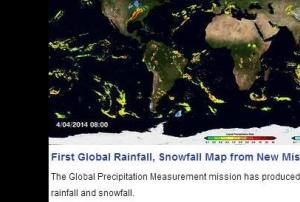Mass Movement
Definition
Facts and figures
Further information
UN-SPIDER Regional Support Offices with hazard-specific expertise
Related content on the Knowledge Portal
In the recent years radar interferometry (InSAR) has become an important tool in various studies. It can be used to produce accurate digital elevation models and observe small surface displacements. Differential interferometry (DInSAR) can detect movements in the radar look direction that are in the order of wavelength used, i.e. less than one centimetre with ERS data. In the presented study DInSAR has been used to observe surface movements in western Slovenia. Three ERS radar images have been supplemented with an external digital elevation model to produce three differential interferograms that temporally covered the Poso~je earthquake, which happened on April 12, 1998. For the area around Bovec a land subsidence of approximately 0.5 cm has been observed; the largest movements detected exceeded 2 cm. DInSAR has been compared to the permanent scatterers interferometry (PSInSAR). Both methods are complementary and both have individual advantages and disadvantages.
- Landslide inventory mapping is an indispensable prerequisite for reliable hazard and risk analysis, and with the increasing availability of very high resolution (VHR) remote sensing imagery the creation and updating of such inventories on regular bases and directly after major events is becoming possible. The diversity of landslide processes and spectral similarities of affected areas with other landscape elements pose major challenges for automated image processing, and time-consuming manual image interpretation and field surveys are still the most commonly applied mapping techniques. Taking…read more
- Landslides are a major type of geohazards claiming thousands of casualties and billions of dollars in property damages every year. Catastrophic landslide activities are often triggered by some extreme events such as earthquakes, excessive precipitations, or volcanic eruptions. Quickly identifying the spatial distribution of landslides induced by these extreme events is crucial for coordinating rescue efforts and planning in situ investigations. In this study, we propose an automated method for detecting the spatial distribution of earthquake-triggered landslides by examining after-event vegetation…read more
- In the present work we present first results of ground deformation measurements inferred through repeat-pass Synthetic Aperture Radar (SAR) Interferometry (In-SAR) in C- and X-band over an Italian Alpine area, in Lombardia region. The activity was carried out in the framework of the MORFEO (MOnitoraggio e Rischio da Frana mediante dati EO) project, founded by the Italian Spatial Agency (ASI) and dedicated to landslide …read more
- Recognition and classification of landslides is a critical requirement in pre- and post-disaster hazard analysis. This has been primarily done through field mapping or manual image interpretation. However, image interpretation can also be done semi-automatically by creating a routine in object-based classification using the spectral, spatial and morphometric properties of landslides, and by incorporating expert knowledge. This is a difficult task since a fresh landslide has spectral properties that are nearly identical to those of other natural objects, such as river sand and rocky outcrops, and…read more
- This paper describes the use of the Stable Point Network technique, a Persistent Scatterer Interferometry SAR technique, for the analysis of the Portalet landslide area (Central Pyrenees, Spain). For this purpose, different SAR datasets acquired by ERS-1, ERS-2, ENVISAT and TerraSAR-X satellites have been analysed. The use of different SAR images acquired by satellite radar sensors operating at different microwave lengths has allowed for a comparative assessment …read more
- A proper analysis of slow-moving landslides calls for several efforts aiming at their characterization and mapping. Considering the uncertainties related to the landslide inventorymaps the integration of conventional techniques with remote sensing data, such as differential SAR interferometry (DInSAR), can furnish a valuable contribution in a number of case studies. However, standardized procedures for the interpretation and the confident use of DInSAR data, according to landslide zoning developments, have not been fully investigated and validated,although algorithms for image processing have becomemore andmore sophisticated. Thiswork addresses a new …read more
- Landslides are devastating phenomena that cause huge damage around the world. This paper presents a quasi-global landslide model derived using satellite precipitation data, land-use land cover maps, and 250m topography information. This suggested landslide model is based on the Support Vector Machines (SVM), a machine learning algorithm. The National Aeronautics and Space Administration (NASA) Goddard Space Flight Center (GSFC) landslide…read morePublishing institution:
- Publishing institution:
- Publishing institution:


